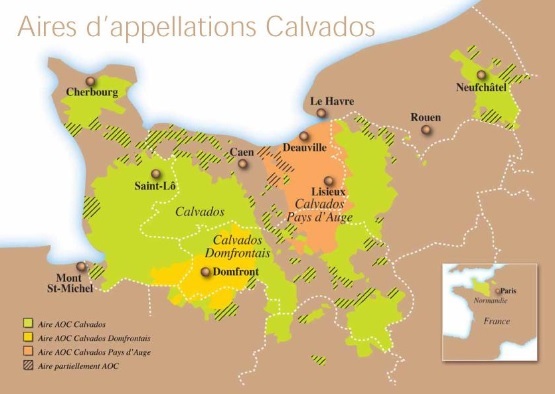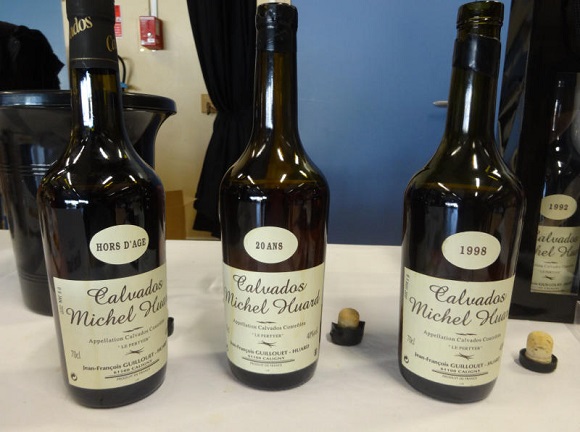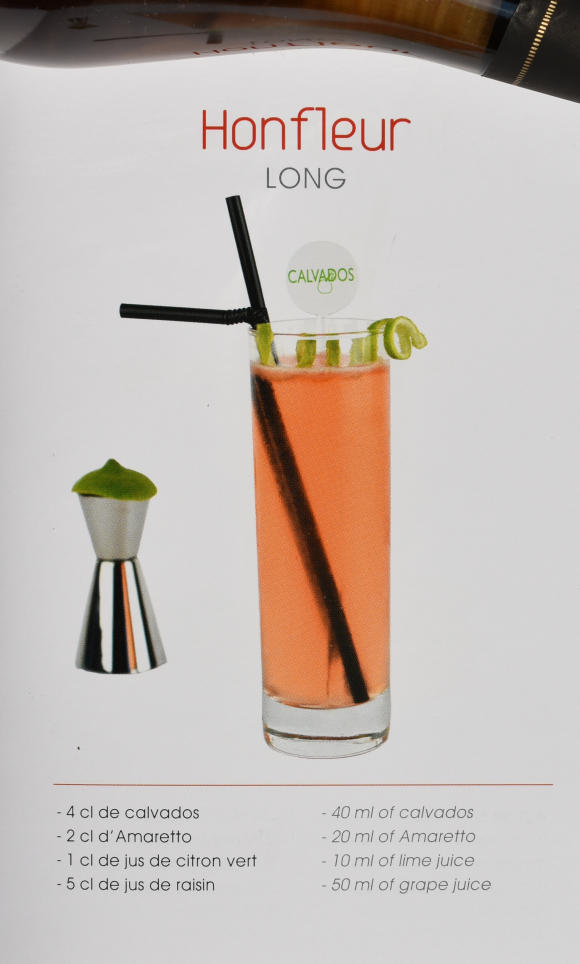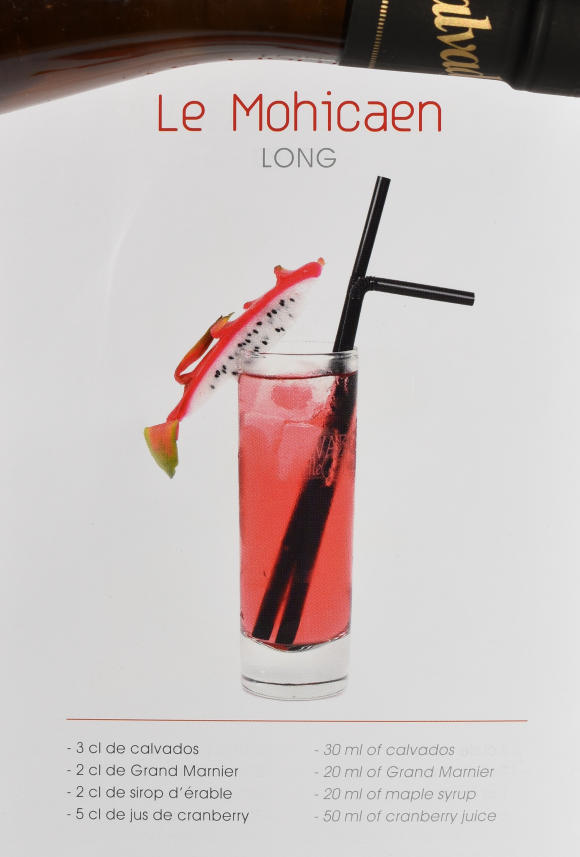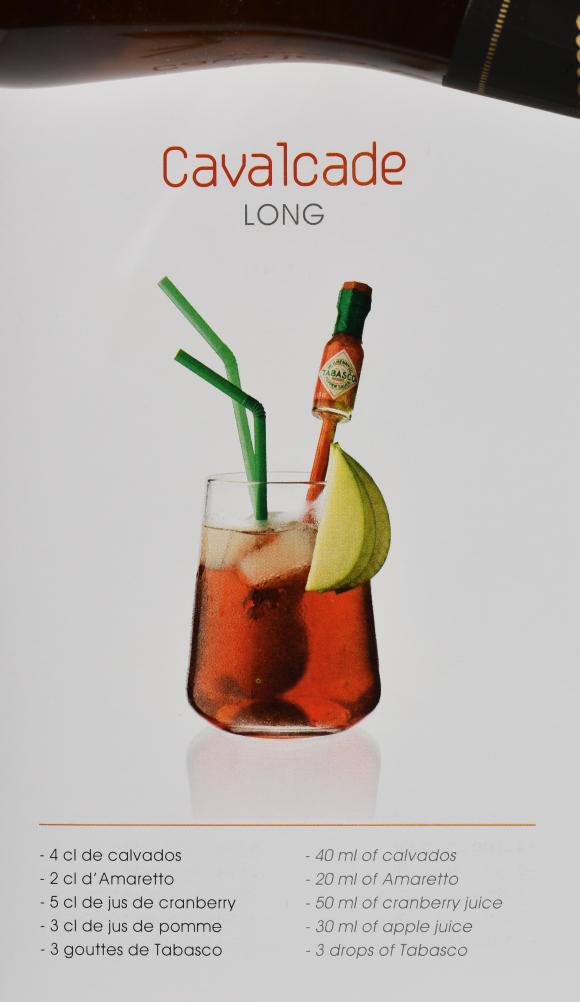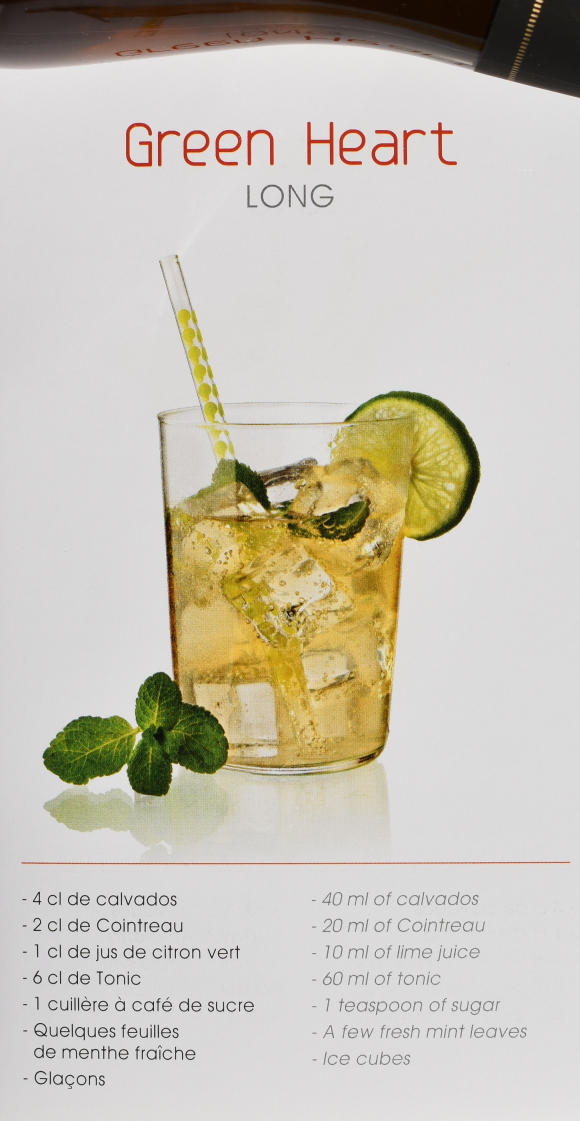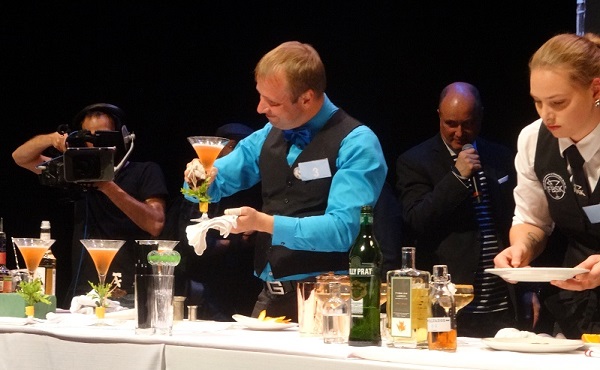
I’ve long been a purist when it comes to brandy, preferring it neat to cocktailed. That holds for my relationship with the top trio of French brandies: calvados, the apple brandy from Normandy, cognac, made from doubly distilling white wine in Charente and Charente-Maritime, and armagnac, made from the singly distilling white wine in Gascony. Call me old-fashion, but I still appreciate brandy an occasional digestif after a lengthy meal and as a nightcap.
Nevertheless, 35 years ago “bartender” was one of the most promising lines on my resume, and I am not immune to cocktail trends or simply to a good brandy cocktail come aperitif time.
Among the trio of brandies mentioned above, cognac and armagnac, as grape-based spirits, carry more prestige than apple-based calvados, yet calvados is the one I most frequently encounter on my travels for the simple reason that I visit Normandy from Paris more often than I visit Charente or Gascony. One of those visits to Normandy was to the Calvados Nouvelle Vogue International Trophies, an annual bartending competition to create the best calvados-based cocktails.

The competition is held in a different location in Normandy each year in spring, for example the pretty port town of Granville in 2017 and the city of Caen in 2018. I attended last year’s edition and was invited to serve on the jury for the inter-journalist competition. I even had a chummy moment with that year’s master of ceremonies, Colin Field, head bartender of the Hemingway Bar at the Ritz in Paris and the most famous barman in France. That for the photo op.
When it comes to calvados cocktails in particular, the shout-out goes to Marc Jean, who has just celebrated 30 years of tending bar at Le Normandy, the venerable Barrière-owned hotel in Deauville.
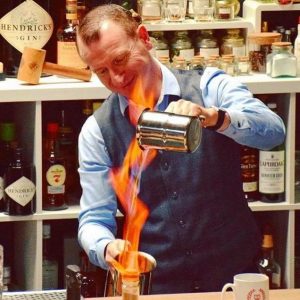
Jean began his working life at the age of 16, in 1982, as an apprentice waiter at another of the region’s great historic hotels, the Grand Hôtel de Cabourg. But it was behind the bar that he would make a home for himself. Hired as third barman at the Normandy in 1988, he rose to head barman in 2000. One of the original participants in the Calvados Nouvelle Vogue competition, he is now one of its organizers as well as president of the Association des Barmen de Normandie.
As a Norman born and bred, calvados naturally hold place of honor on his liquor shelves. He has created numerous calvados cocktails. Four of his recipes can be found below.
Before turning to mixology, however, a brief history of the brandy called calvados.
A Brief History of Calvados
Normandy has been prime territory for fermented apple juice, i.e. hard cider, since the early 16th century. The first record of the fermented juice being distilled to make brandy (eau-de-vie in French) dates to 1553. Though produced for centuries, the spirit became largely associated with the Normandy department (or sub-region) named Calvados in the 19th century. In 1942 it gained status as a legally recognized appellation, meaning only apple brandy produced within a specifically delimited zone could be called calvados. Wartime—1942—may seem an odd time to be seeking official appellation status, particularly as the Germans were increasingly building up defenses along the coast in order to repel an eventual Allied invasion. But the war was in fact a major reason for producers to seek regulation of the term calvados for their brandy: during the German Occupation, the only copper stills that were not requisitioned by Germany for military purposes were those used for appellation products. It’s a spirit that Allied soldiers got to know following D-Day during the Battle of Normandy 1944.
Calvados, affectionately known as calva, is largely produced in the Normandy departments of Calvados and Manche (which represent the major of the zone in which the Battle of Normandy took place). There are also designated production zones just over the border in Mayenne and Sarthe and in the area around the town of Neufchatel, further west in Normandy.
AOC (Controlled Appellation of Origin) Calvados represents the majority of brandy production in the region, while two other AOCs within restrained zones are Calvados Pays d’Auge and Calvados Domfrontais. For the latter, produced in area on the southern edge of Normandy that lends itself to growing pears, the brandy is a made from distilling the fermented juice of apples and at least 30% pears.
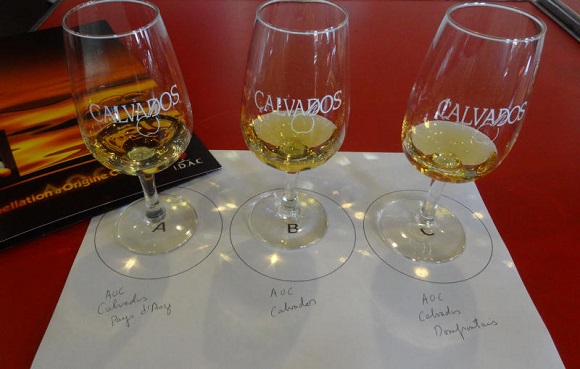
Calvados Cocktails
For much of its history calvados has been imbibed in its pure state. It has also found its way into the kitchen. And increasingly over the past 20 years it has been used in cocktails. Or 22 years to be precise since a major influence in the spread of the gospel of the calvados cocktail has been the Calvados Nouvelle Vogue competition, which was launched in 1996.
Originally a regional bartending competition, Calvados Nouvelle Vogue International Trophies, as it came to be called, now includes bartenders from 15 countries, mostly European, themselves winners of national competitions which draw 500 competitors. Competitors are judged on creativity, dexterity and the story they tell about the inspiration for their cocktail, along with its taste and presentation. A theme is given each year—this year, vegetables. A Polish bartender, Robert Piasecki took top prize, followed by a Swede and a Belgian.
Last year’s winner, on the theme of the sea, was French bartender Yolanda Fouquet, whose cocktail brought together calvados and beer from Brittany. (She returned as a competitor in 2018 but didn’t make the podium.) A competition among student bartenders and another among journalists are also held.
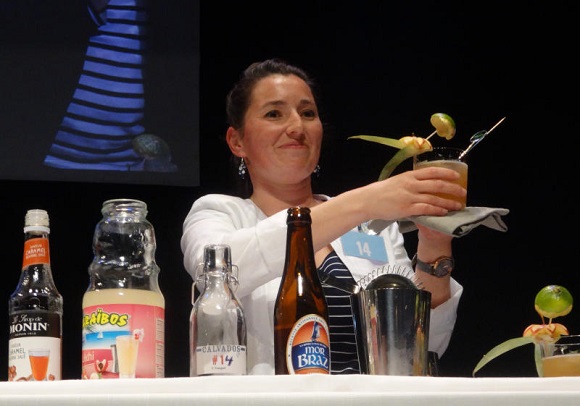
Among Marc Jean’s many Calvados-based cocktails, long and short, I’ve selected below, with permission, four recipes from Cocktails au Calvados, a collection of recipes that he co-authored with Dominique Grousseaud. I’ve selected these because they represent a relatively easy introduction to making Calvados-based cocktails with ingredients that you’re likely to have at home. (For more complex concoctions go see Marc Jean at Le Normandy in Deauville.)
You’ll need the calvados, of course.
When traveling in the production zones in Normandy you’ll undoubtedly drive by apple farms that offer a tasting or a visit of their installations. Local tourist offices can provide a list of those that receive visitors. Some of the best are produced in the Pays d’Auge and under that appellation, but there is quality elsewhere as well.
During my own travels in the region, I enjoy the encounter as much as anything. Quality of the calva is often the secondary pleasure but nothing beats meeting a quality producer with a good story to tell.
More than half of calvados production is exported, with the U.S. placing near the top of the list, so you’ll have little trouble finding some at a decent liquor store at home. Calvados is aged in oak vats for a minimum of two years (three years for calvados domfrontais). Long-aged calvados of six years or more may be more difficult to find in ordinary liquor stores at home. Anyway, a young calvados of two or three years of oak aging is more appropriate for most cocktails since they provide the fruity aromas that are often sought. Older brandies can also add their distinctiveness to a cocktail, but personally I’m saving mine for a nightcap.
© 2018, Gary Lee Kraut
Calvados Cocktail Recipes
Here are four pages from Cocktails au Calvados, a collection of recipes by Marc Jean and Dominique Grousseaud, reproduced with permission.
Further information about calvados and hard cider in Normandy can be found on France Revisited in this article and in more detail on the site of IDAC, the Interprofession des Appellations Cidricoles, the association of professionals involved with appellation (hard) cider products, those made from cider apples and perry pears.
For information about cocktail-bar tours and encounters with mixologists in Paris see here.
France Revisited reminds readers to drink responsibly and with moderation.


